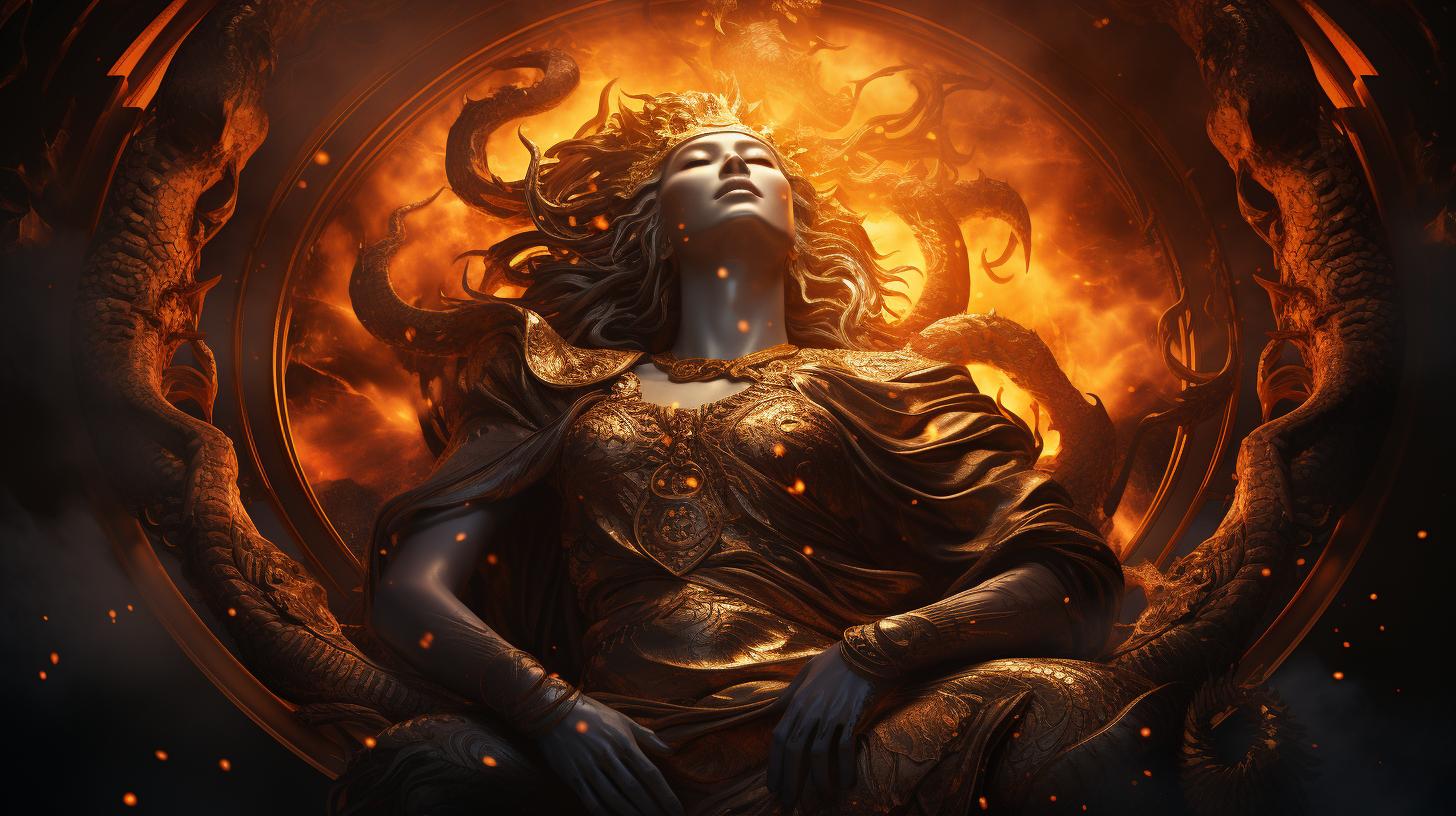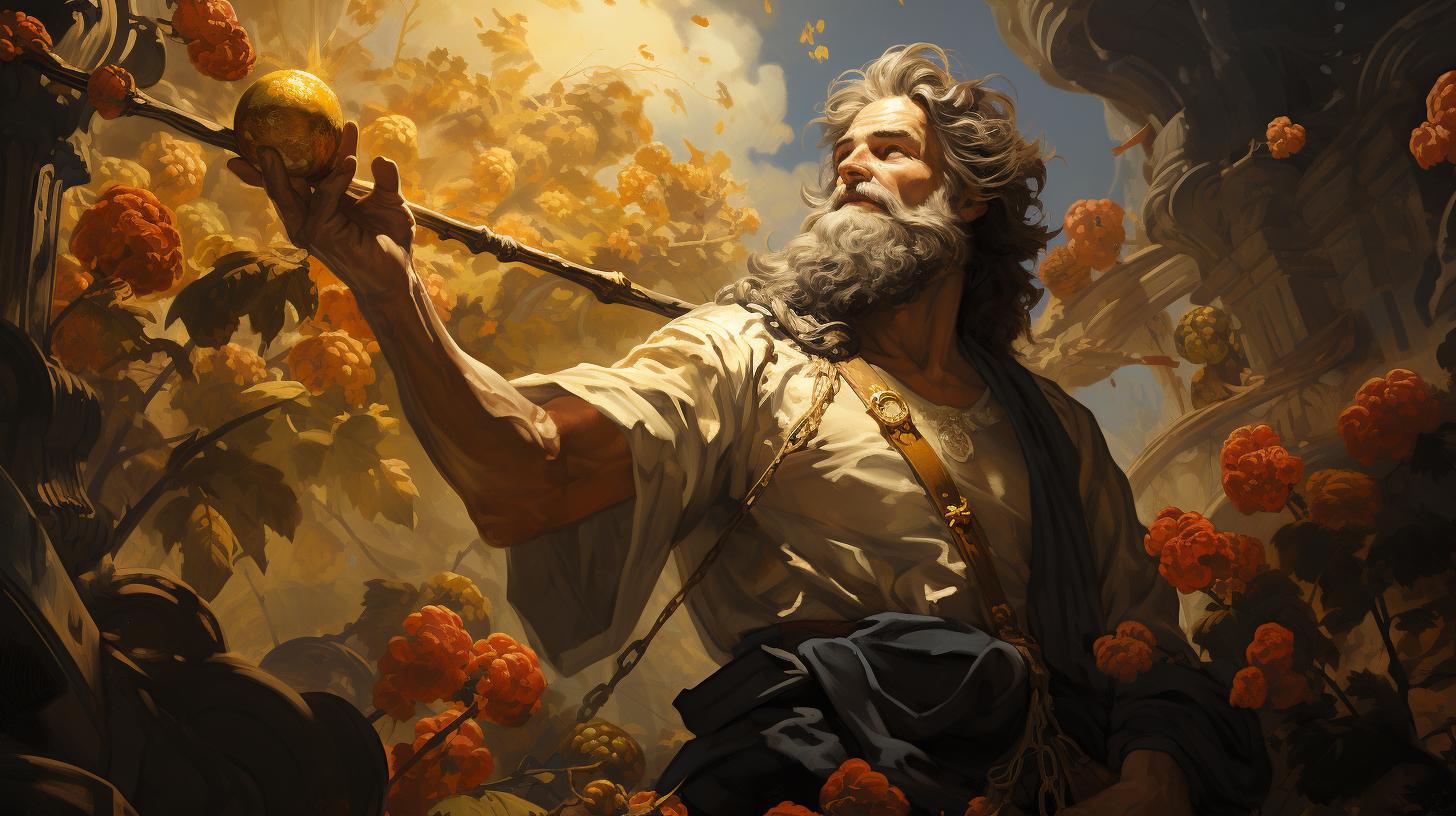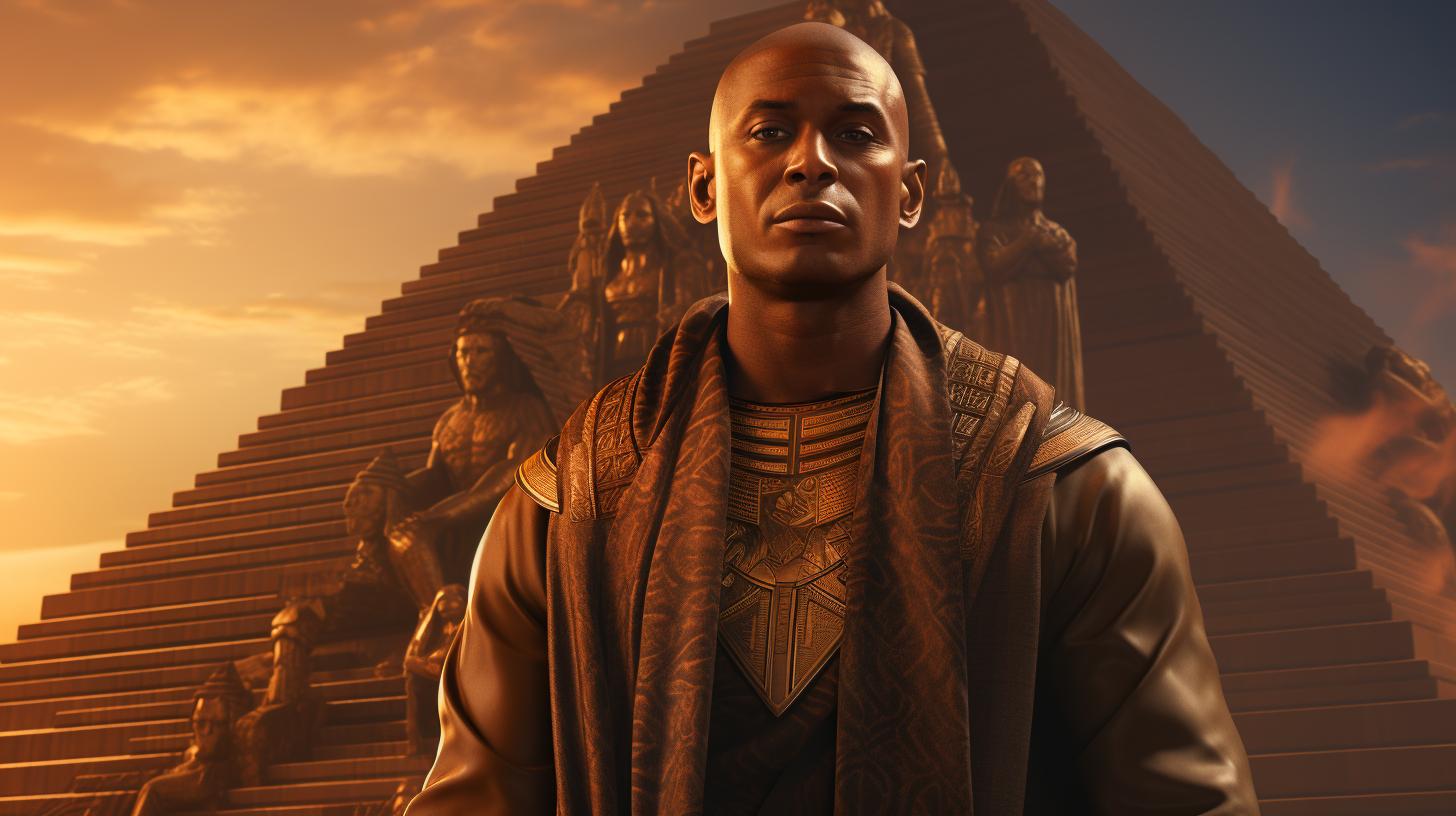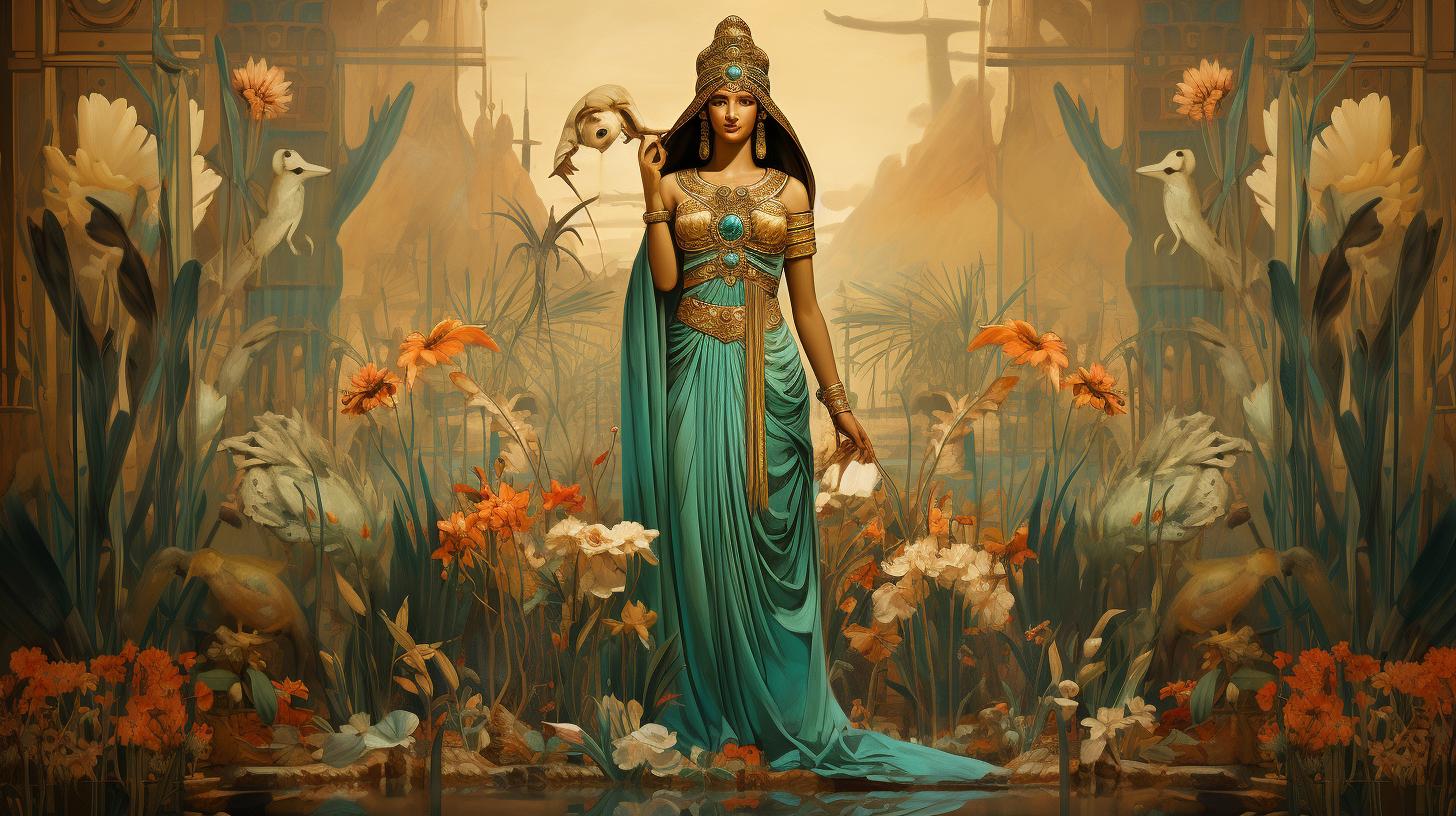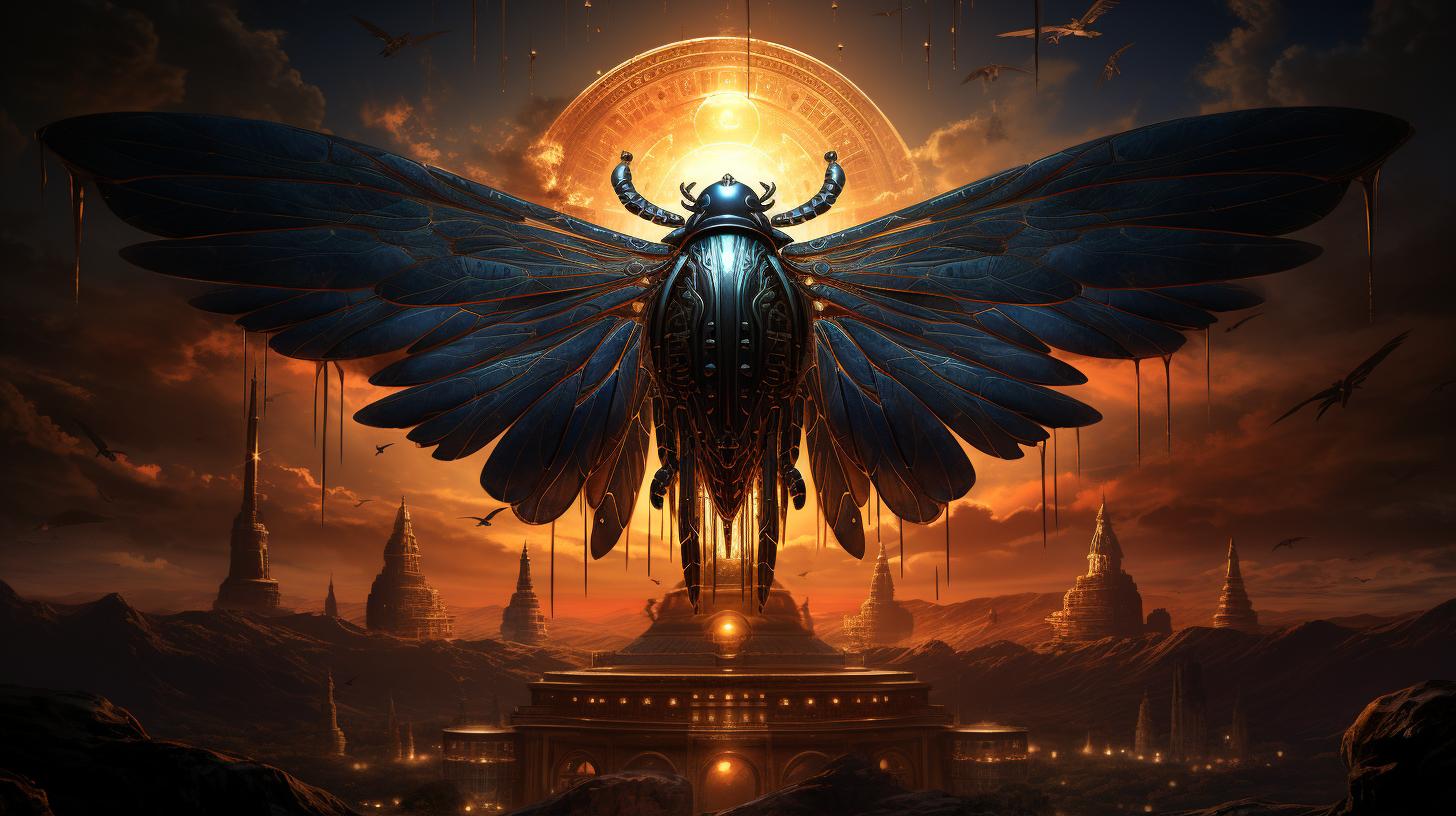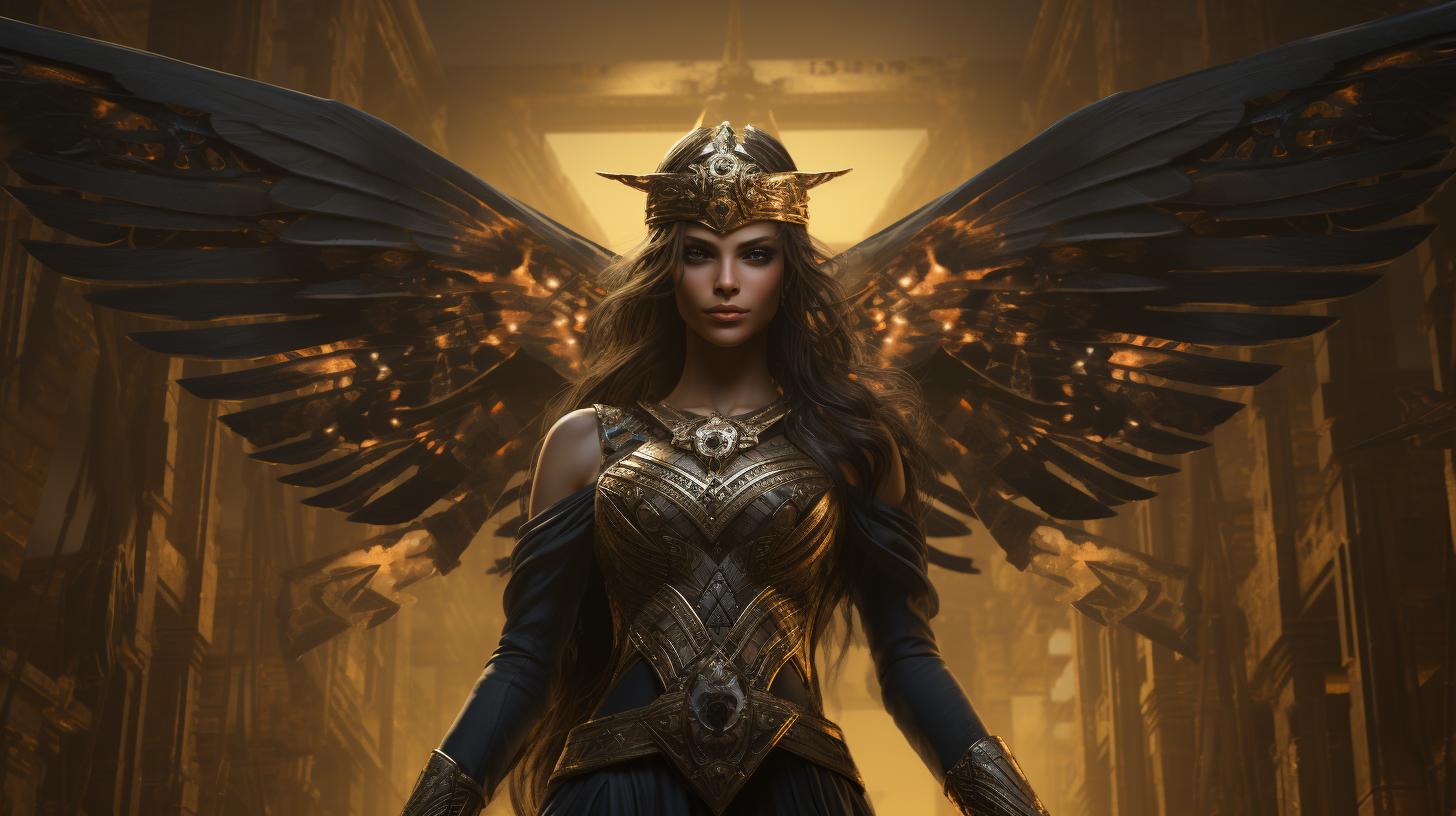Mehen Egyptian God: A Powerful Serpent Protector in Ancient Egyptian Mythology
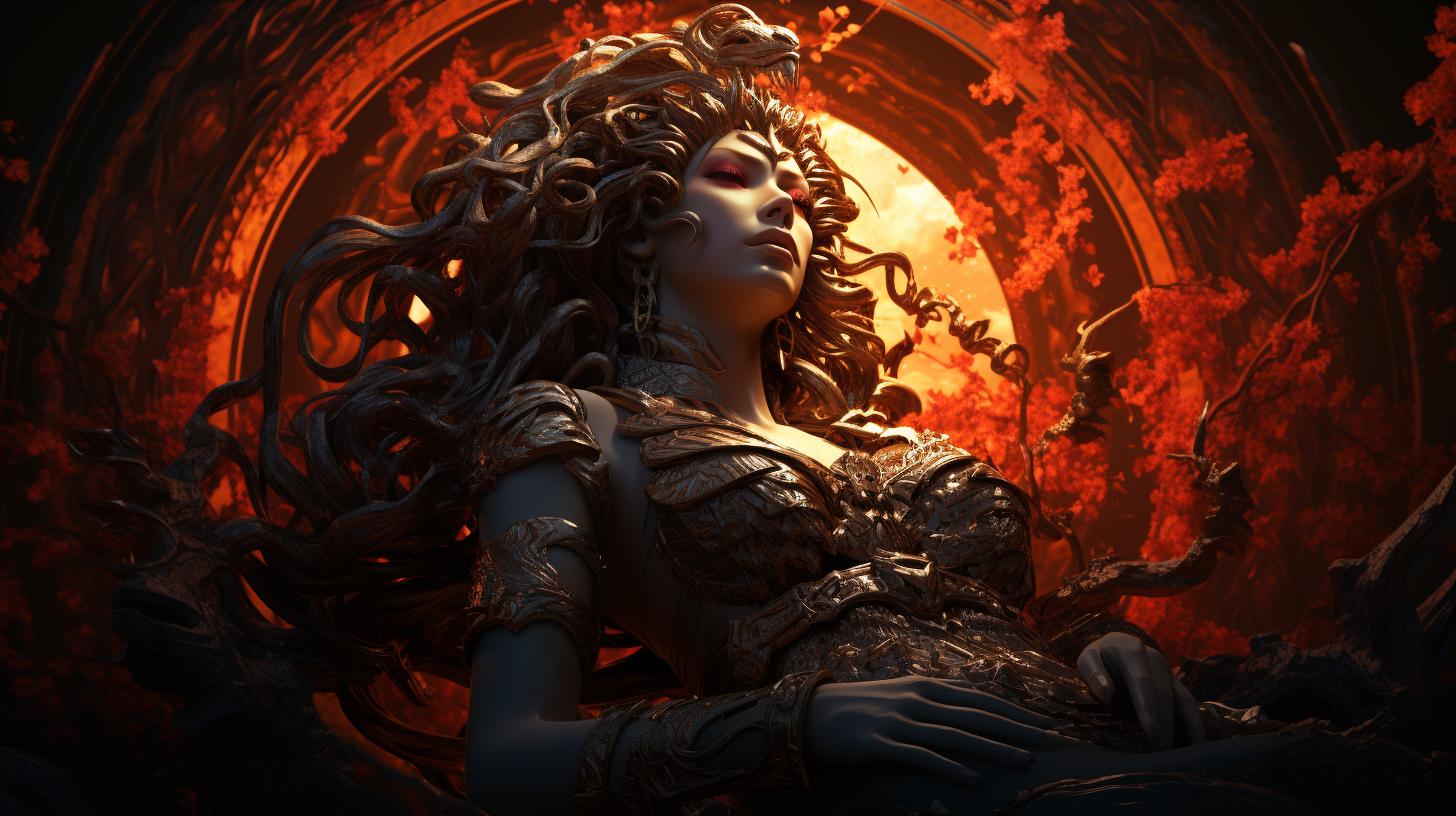
Mehen Egyptian god is an important serpent deity in ancient Egyptian mythology. Known for his protective role, Mehen guarded the sun god Ra and the body of Osiris. Represented as a giant snake with nine concentric rings, symbolizing his protective nature, Mehen coiled around Ra during his journey through the underworld, shielding him from the serpent god Apophis.
Additionally, Mehen was associated with the ancient Egyptian game of the same name. This article explores Mehen’s role as a protector, his depiction and symbolism, his presence in religious worship, and his connection to the ancient game.
The Role of Mehen as a Protector
Mehen, the ancient Egyptian god, played a crucial role as a powerful protector in their mythology. He was revered for safeguarding both the sun god Ra and the underworld realm of Osiris. Let’s explore the various aspects of Mehen’s role in protecting these important entities.
Mehen’s Role in Protecting Ra, the Sun God
Mehen was known as Ra’s fierce guardian during his perilous journey through the underworld. As the sun god traveled in his solar barque, Mehen coiled himself around Ra, shielding him from the treacherous attacks of the serpent god Apophis.
This protective gesture ensured the safe passage of Ra, allowing him to rise again in the sky each day.
Mehen’s Role in Safeguarding Osiris and the Underworld
Besides his association with Ra, Mehen also had a significant role in protecting Osiris, the ruler of the underworld. In Egyptian mythology, Mehen coiled around Osiris’ mummified body, symbolizing his guardianship of the deceased king’s resurrection and eternal existence.
Mehen’s protective presence ensured the harmony and order within the realm of the dead.
Mehen’s Association with Solar Barque and the Journey Through the Underworld
One of the most notable aspects of Mehen’s role as a protector was his close association with Ra’s solar barque and the perilous journey through the underworld. According to ancient Egyptian beliefs, Mehen accompanied Ra during his nightly voyage in the underworld, defending him against the malevolent forces that sought to obstruct his path.
This emphasized Mehen’s significance as a guardian not only of Ra but also of the cosmic order and balance.
Mehen’s role as a protector in Egyptian mythology highlights the importance of his divine presence in ensuring the safety and continuation of the sun god and the underworld realm.
Through his coiling presence and formidable defense, Mehen secured the path to rebirth and maintained the order within both the celestial and underworld domains.
Depiction and Symbolism of Mehen
In Egyptian mythology, the depiction and symbolism of Mehen, the serpent god, reveal fascinating insights into the ancient Egyptian worldview.
Representation of Mehen as a Giant Serpent
Mehen was commonly depicted as a colossal serpent, highlighting his association with power, protection, and the natural world. The artists depicted him with great attention to detail, often emphasizing his elongated body, menacing eyes, and coiled posture.
The ancient Egyptians saw serpents as divine creatures and believed in their mystical presence. Mehen’s representation as a giant serpent captured the awe-inspiring essence of his divine nature and defense capabilities.
Interpretation of Mehen’s Nine Concentric Rings
The portrayal of Mehen with nine concentric rings encircling his body holds profound symbolism in ancient Egyptian mythology. The rings represent an eternal cycle, emphasizing Mehen’s everlasting protection and his connection to the divine realm.
Ancient Egyptians believed in the cyclical nature of life and death, and Mehen’s rings were seen as a representation of this cycle. They symbolized the cosmic order and the continuity of existence, reinforcing his role as a guardian deity.
Mehen’s Presence in Ancient Egyptian Art and Hieroglyphs
The presence of Mehen in ancient Egyptian art and hieroglyphs further illustrates his significance in their culture. He frequently appeared in tomb paintings, temple reliefs, and papyrus scrolls, demonstrating the reverence and importance given to him.
Artistic representations often showcased Mehen’s coiled form, showcasing his association with protection, regeneration, and the underworld. Hieroglyphic inscriptions also referenced Mehen, solidifying his role in the religious and mythological beliefs of the ancient Egyptians.
- Mehen’s depiction as a giant serpent conveys his power and defensive attributes.
- The nine concentric rings symbolize eternity and Mehen’s continuous guardianship.
- Ancient Egyptian art and hieroglyphs prominently feature Mehen, reinforcing his significance in their culture.
Mehen in Ancient Egyptian Religion and Worship
Mehen, the serpent god, held a significant role in the religious practices and worship of ancient Egyptians.
His cult gained prominence during the Middle Kingdom, as evidenced in the Texts of the Coffins. These texts mention the “Mysteries of Mehen,” suggesting intricate rituals and ceremonies associated with this revered deity.
Cult of Mehen in the Middle Kingdom
The cult of Mehen flourished during the Middle Kingdom period, and he was revered as a powerful protector. Ancient Egyptians believed that Mehen possessed the ability to accompany the gods on their journeys.
It is during this time that Mehen’s role in safeguarding the sun god Ra and the corpse of Osiris gained particular importance.
Mehen’s Role in ‘The Books of the Underworld’ in the New Kingdom
Mehen’s significance as a protective deity extended into the New Kingdom, as evidenced in the ‘Books of the Underworld,’ particularly the renowned ‘Amduat.’
These texts depicted Mehen as a coiled serpent, gracefully wrapped around Ra’s solar barque, guarding him against the malevolent serpent deity Apophis lurking in the depths of the underworld.
Rituals and Worship Associated with Mehen
The rituals and worship practices associated with Mehen included prayers, offerings, and ceremonies conducted by priests and devotees.
These actstook place in sacred temples and shrines dedicated to Mehen, where his image was venerated. The faithful believed that by honoring Mehen, they could invoke his divine protection and assistance during their own journeys through the afterlife.
As the cult of Mehen developed and evolved over time, his significance remained inscribed in the mythological and religious landscape of ancient Egypt. The presence of Mehen in the Middle and New Kingdoms, coupled with the intricate rituals and his role as a guardian, underscores the reverence and importance attributed to this serpent god within ancient Egyptian religion and worship.
Mehen and the Ancient Egyptian Game
The connection between Mehen, the Egyptian god, and the ancient board game named after him has long fascinated scholars and enthusiasts alike. This section explores the intriguing association between Mehen and the game, delving into its possible origins and the ongoing debate surrounding its relationship with the deity.
Connection between Mehen Egyptian God and the Ancient Board Game
The ancient Egyptian game, commonly referred to as Mehen, shares its name with the serpent deity. This has led many to speculate about a connection between the two. The game is believed to have been played on a circular board divided into individual segments.
Some scholars suggest that the design of the game board, resembling the coiled shape of a serpent, may have been inspired by the representation of Mehen in Egyptian mythology.
Debate: Origins of the Game or Influence of the Deity
When it comes to the relationship between Mehen and the ancient board game, there is ongoing debate among experts.
Some propose that the game was invented first, and later the deity Mehen was depicted as inspired by the game. Others argue that the game was inspired by the mythical serpent god, with the belief that playing the game held religious or symbolic significance.
The origins of the Mehen game remain a subject of speculation, and its association with the deity Mehen adds to the intrigue. While there is no conclusive evidence to settle the debate, examining the similarities between the game and the serpent god provides valuable insights into the cultural and religious context of ancient Egypt.
Frequently Asked Questions about Mehen Egyptian God
What is the meaning and symbolism of Mehen’s nine rings?
The nine concentric rings that make up Mehen’s body symbolize his protective nature. Each ring represents a layer of defense as Mehen coils around Ra and other gods during their journeys.
The rings also convey the idea of continuity, as they create a sense of unity and wholeness.
How does Mehen protect Ra during his journey through the underworld?
Mehen wraps himself around Ra’s solar barque as it travels through the treacherous underworld. As a powerful serpent deity, Mehen acts as a shield and defends Ra against Apophis, the serpent god of chaos.
Mehen’s presence ensures the safe passage of the sun god, preserving light and order.
What is the significance of Mehen in the cult of Osiris?
Mehen plays a vital role in the cult of Osiris, particularly concerning the afterlife. As Osiris is the god associated with death and rebirth, Mehen’s protection guards his body during the journey in the underworld.
Mehen represents the eternal cycle of life and death, symbolizing the transformative power of Osiris.
How was Mehen represented in ancient Egyptian art and hieroglyphs?
Mehen is often depicted as a coiled serpent, a colossal creature with a formidable presence. Ancient Egyptian artists portrayed Mehen in vivid detail, showcasing his immense size and distinct nine-ring body.
Hieroglyphs also featured Mehen to represent protection and endurance in various religious texts and inscriptions.
What is known about the ancient Egyptian game of Mehen?
- The ancient Egyptian game of Mehen was named after the deity.
- The game board depicted the image of Mehen as a coiled serpent.
- Players moved their pieces along the rings of Mehen’s body.
- The exact rules and gameplay of Mehen are not fully understood, as no complete set of instructions has been found.
- The game may have represented the journey through the underworld, aligning with Mehen’s protective role in mythology.
Explore the world of Mehen, the ancient Egyptian serpent god, and unravel the mysteries surrounding his symbolism, protective nature, religious significance, and his association with the intriguing board game bearing his name.
.

